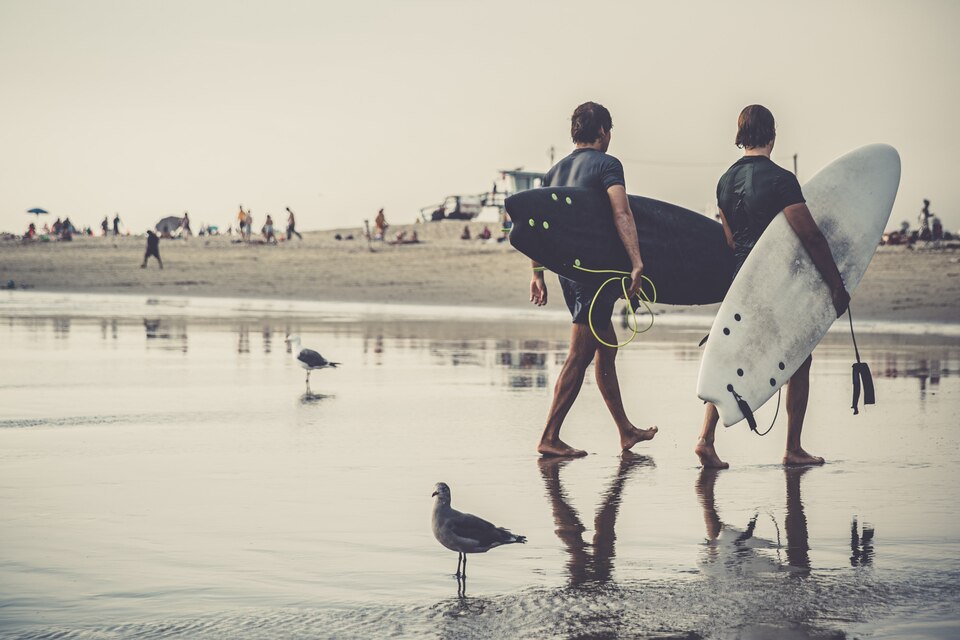Essential Tips for Improving Your Surfing Skills
Do you want to surf the way professionals do? Apart from being an exhilarating water sport, surfing is a means of relating to the sea and nature. If you are a novice or have some experience in the field, there is always room for advancement in your surfing skills. In this article we will discuss some essential guidelines in order to help you improve on your surfing skills. Thus, get your board and wax it up as we are about to hit some waves!
Get the Right Gear
Before you jump in the water, make sure you have the right gear. Here are some essentials:
- The Surfboard: Type of board you are moving with are quite pivotal for advancement. Take the longer, wider types, as they allow more stability for a newbie like you. With time and some practice, shift to a smaller type for maneuverability.
- Wetsuit Recommendation: You should be able to stay warm and comfortable in the water with a normal fullsuit. Always check with local advice about what depth you will need your wetsuit for.
- Good Quality Wax: You should have a wax that allows application well enough to stick on your board and not fall off. One can always use a good brand or quality of wax, depending on the temperature of the water, to avoid falling.
Master the Basics
Before rushing after those giant waves, every beginner must learn and practice some surfing basics. So go ahead and properly practice ‘paddling’ and ‘take-off’ on small waves or even at the beach.
-
Paddling
Efficient paddling is a core activity that uses the arms to rush through water at the fastest and most comfortable pace. The body should be kept raised over the board, the arm should draw a complete arc in each stroke, and breathing should be cyclic to save energy while paddling.
-
Pop-Up
This is the motion of moving from lying on your board to standing. You will want to arch your back, place your hands close to your shoulders, and push your upper body up off the board while at the same time bringing your back foot forward. Practice this move on land to build muscle memory, and then try it in the water.
-
Balance and Stance
Success in riding waves depends on balance and finding the right stance. Keep your feet at a shoulder’s length, with the one on the front slightly tilted towards the nose of the board. On the wave, ensure your weight is well distributed and employ the arms to maintain balance.
Try to analyze the waves.
One of the important skills in separating an experienced surfer from a novice is being able to read and analyze waves by just watching. With knowledge of the characteristics of the waves you are studying, good positioning will enable you to ride those waves properly. The following are things you need to keep in mind while analyzing them:
- Size of the wave: The size of the wave is important in gauging how much strength the surfer is seeking with the waves. Start with waves smaller in size and advance like a scale as the skills get better.
- Wave Shape: Look for waves that offer a good shape, have a clean face, and are well defined at the peak. They will give you a better and longer ride.
- Wave Breaking Point: Look where the wave is breaking; it can be near or far from the shore. Position accordingly and catch them if necessary.
Practice Proper Etiquette
Surfing has its customs, and good manners are a must for a safe and enjoyable experience for everyone in the water. With that being said, here are a few key notes to remember:
- Respect the Locals: When you are in a new spot, respect those people who were there first and go by their situation. Know what rules or customs they may have.
- Wait Your Turn: Wait in line and do not drop in on someone else’s wave-by-priority. Wait for your turn, respecting the surfer that has caught the wave before you.
- Communicate: Definitely, throw clear hand signals or shout vocal calls to communicate with your co-surfers out in the water. It will help avoid any kind of collision, and for sure, it will create a sense of camaraderie among fellow surfers.
Stay Fit and Safe
Surfing is a physically demanding sport that requires strength, flexibility, and endurance. In order to improve your surfing abilities, it is important to be fit and take care of your body. Below are some tips:
-
Fitness Routine
Maintain regimented fitness with cardiovascular exercises, weight training, and flexibility-improving exercises. Include core strength exercises with upper body exercises and leg exercises because they are important in paddling, ducking, diving, and balance.
-
Warm-up and Stretching
Do some dynamic exercises to warm up the body and stretch the muscles before entering the water, not to overstretch or get injured. Extra stretch in the shoulders, back, hips, and legs.
-
Hydration and Sun Protection
Always hydrate yourself, especially if you’re spending long hours in the water. Drink lots of water, and protect your skin from the sun’s rays by applying sun screens and wearing rash guards.
Conclusion
Improving your surfing skills takes time, practice, and dedication. Remember, every wave is a learning opportunity, so don’t be afraid to push yourself and try new things. Whether you’re a beginner or an experienced surfer, having a reliable trip planner can enhance your surfing experience. With the right equipment, solid fundamentals, wave analysis, proper etiquette, and a focus on fitness and safety, you’ll be well on your way to becoming a better surfer. So get out there, embrace the waves, and enjoy the exhilaration of riding the ocean’s energy!

